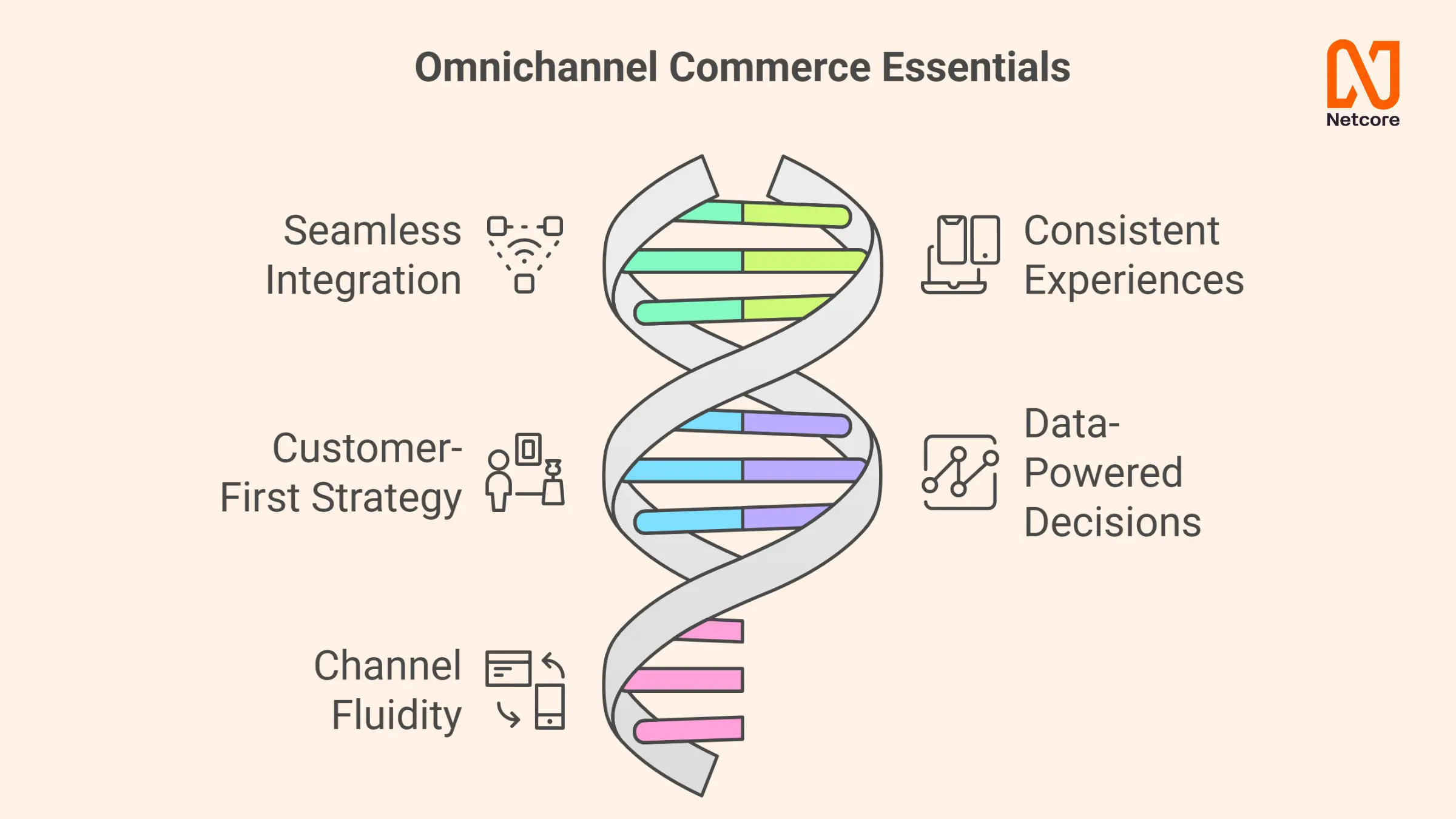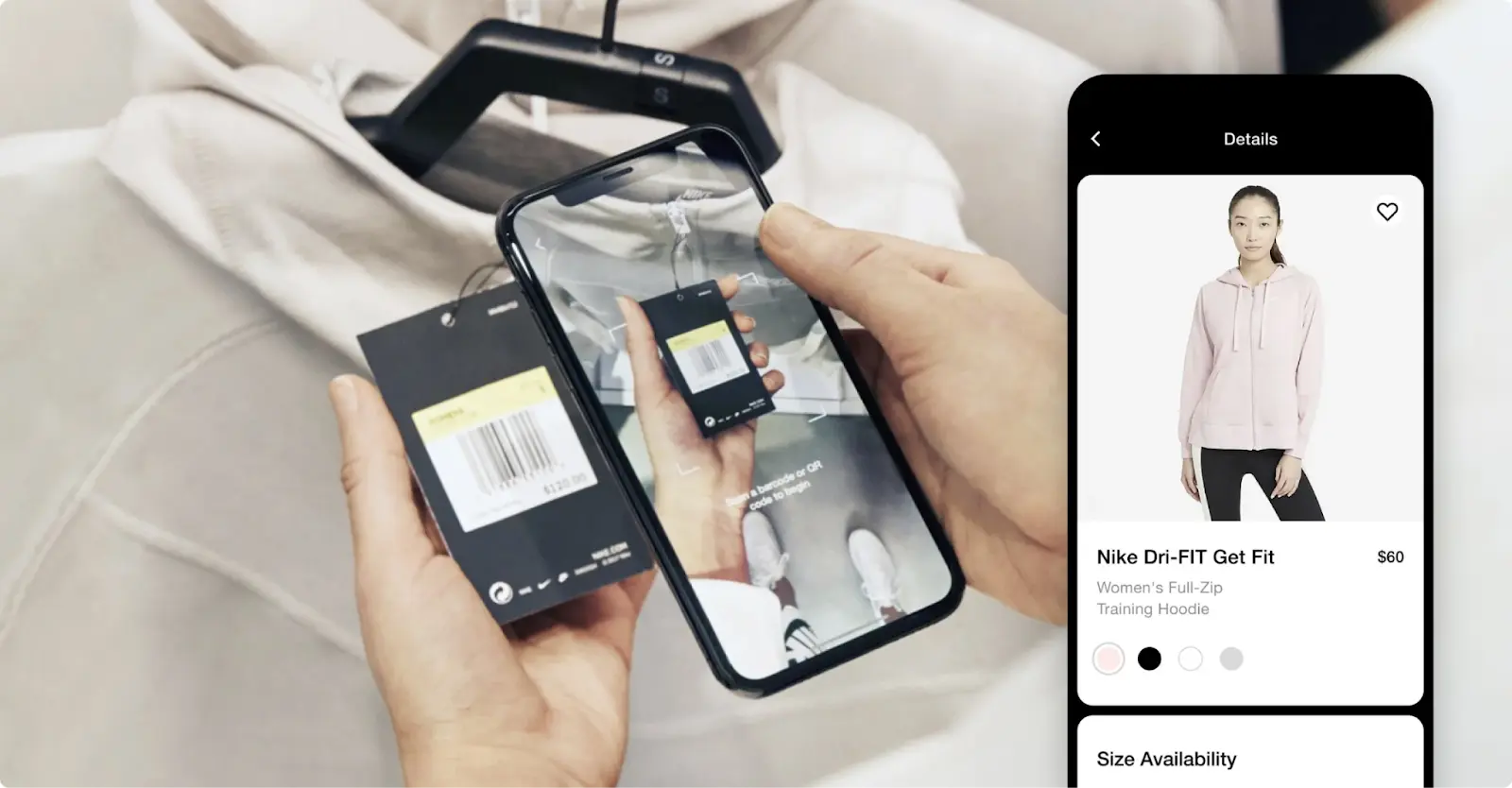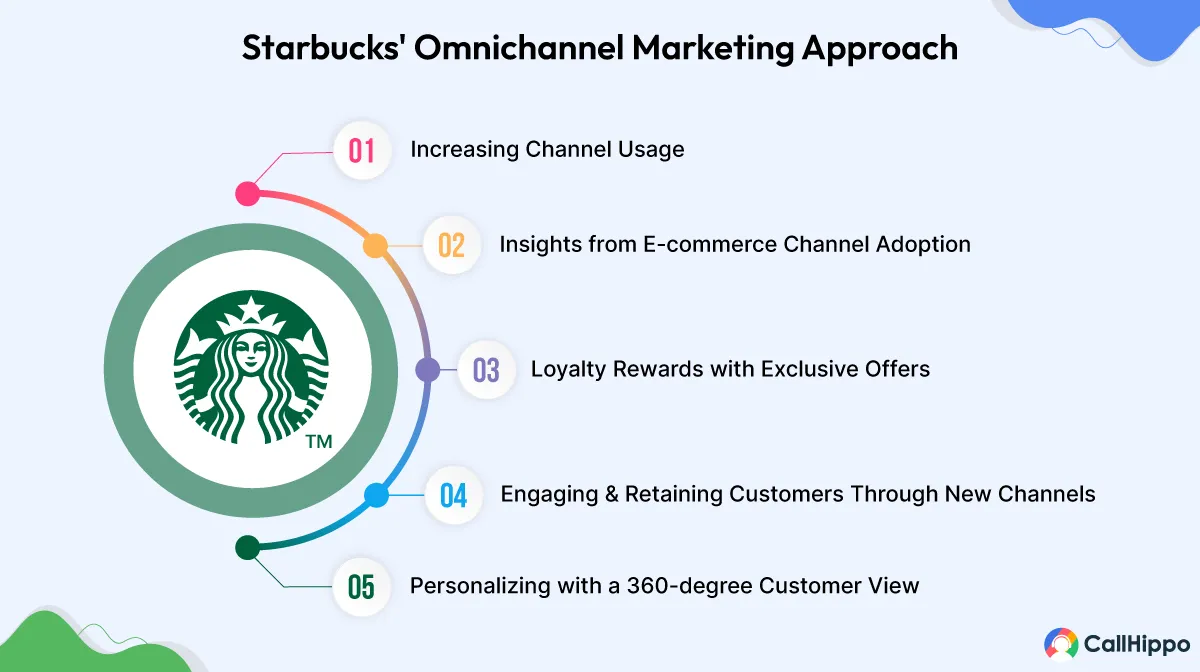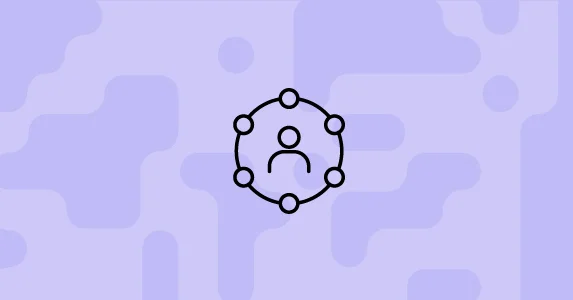Let’s be honest: as customers, we don’t shop in a straight line. We browse on our phones during commutes, check reviews on laptops at work, compare prices in-store, and finally place the order via a chatbot or app (probably while binge-watching a show). Our shopping behavior isn’t limited to one channel—and that means businesses can’t afford to think in silos anymore. That’s where omnichannel commerce comes in.
TL;DR
Omnichannel commerce is a strategy that connects all your customer touchpoints—website, app, store, messaging, email—into a single, seamless experience.
In this blog, you’ll learn:
- What omnichannel commerce is and how it differs from multichannel
- Key traits: seamless integration, consistent experiences, customer-first design
- Real-world examples from Nike, Starbucks, Sephora, and IKEA—and how they boost CLTV, retention, and satisfaction
- Benefits: higher conversion rates, better retention, increased revenue, and stronger brand engagement
- Common challenges (like data silos and tech complexity) and how to solve them
- Step-by-step framework to implement omnichannel commerce in your business
What Is Omnichannel Commerce?
across all customer touchpoints—online, offline, mobile, app, and everything in between.
Let’s dig deeper. Omnichannel commerce isn’t just about being present everywhere; it’s about connecting those channels so your customer’s journey feels smooth, personalized, and uninterrupted. According to Google, omnichannel shoppers have a 30% higher lifetime value than those who shop using only one channel.
Here’s what that typically looks like:
- A customer browses products on your website
- Adds something to their cart but doesn’t check out
- Later, gets a WhatsApp reminder with a personalized discount
- Visits a physical store to try it out
- Completes the purchase on your app
Throughout that journey, their preferences, cart history, and communication are synced. That’s omnichannel done right.
Key traits of omnichannel commerce:
- Seamless integration: Your systems (inventory, CRM, POS, messaging) talk to each other
- Consistent experiences: Same pricing, messaging, tone, and promotions across platforms
- Customer-first strategy: You’re meeting customers where they are, not forcing them down rigid funnels
- Data-powered decisions: Behavior across channels fuels personalization
- Channel fluidity: Online, in-app, in-store, social, email—the customer chooses, you connect the dots

Real-Life Omnichannel Commerce Examples
Leading brands like Nike, Starbucks, Sephora, and IKEA are achieving stronger CLTV, higher retention, and better satisfaction scores by connecting the dots across digital and physical channels.
Let’s look at how these companies are turning omnichannel strategies into measurable outcomes:
1. Nike: Boosting CLTV With Seamless Digital-Physical Sync
Nike doesn’t just sell shoes. They’ve built an ecosystem that keeps customers engaged far beyond the point of purchase.
- The Nike app integrates with in-store experiences. Shoppers can scan products in-store to check availability or read reviews.
- Purchases sync across app, web, and physical stores. A profile created online is usable in-store for faster checkout and loyalty rewards.
- Members get personalized drops, early access, and fitness recommendations, increasing emotional stickiness.
Results: Nike reported a sharp increase in repeat engagement and average order value from omnichannel shoppers. Their customer lifetime value (CLTV) saw an uplift of 30% among Nike App users compared to single-channel shoppers.

2. Starbucks: Mastering Retention Through Omnichannel Loyalty
The Starbucks Rewards program is one of the best real-world examples of omnichannel loyalty working in practice.
- Customers can order from the app, pay in-store, or get drinks delivered. Rewards sync instantly.
- Every touchpoint contributes to a single loyalty experience. Preferences and past orders influence offers sent across email, app, or SMS.
- Payment, offers, and ordering are bundled into a single user-friendly system.
Results: Starbucks reported a 40% higher retention rate among Rewards members. Their Net Promoter Score (NPS) improved significantly among users who engaged across 3+ channels.

3. Sephora: Driving Satisfaction With Personalized Cross-Channel Journeys
Sephora combines smart technology with hands-on beauty experiences—and their data architecture makes it possible.
- Customers can take quizzes online and get in-store recommendations based on results.
- Sephora’s Beauty Insider program syncs data from web, app, and stores to power real-time personalization.
- Omnichannel personalization influences product emails, push notifications, and on-site offers.
Results: Sephora consistently scores high in customer satisfaction—with 80+ CSAT scores across channels. Loyalty members who engage across web + app + store spend 15% more and purchase more frequently.
4. IKEA: Enhancing Experience and Revenue With Journey Continuity
IKEA knows that shopping for furniture isn’t linear—so they make it feel continuous.
- Customers can design rooms online and then pull up their saved layout in-store with a QR code.
- Their mobile app uses AR to show products in your space—bridging inspiration and purchase.
- Inventory sync and flexible delivery make checkout consistent across locations.
Results: IKEA reported a significant increase in omnichannel-driven revenue and a 25% increase in conversion rate for shoppers who used 2+ channels in a single purchase cycle.

These brands didn’t just “go omnichannel.” They invested in building real journeys—where every touchpoint adds value, and every customer action builds a richer, more personalized experience.
Benefits of Omnichannel Commerce
Omnichannel commerce keeps your customers happier, your retention higher, and your revenue healthier. Omnichannel customers spend 10% more online and 4% more in-store and have up to 30% higher lifetime value than single-channel shoppers as per Harvard Business Review.
Now let’s break that down. Here’s why it pays to go omnichannel:
1. Increased Customer Satisfaction
- Customers hate repeating themselves or losing progress across devices.
- Omnichannel solves that by letting them pick up where they left off.
- Bonus: they feel understood, not just targeted.
2. Improved Customer Retention
- Personalized re-engagement = fewer abandoned carts
- Unified data lets you build better loyalty programs
- The result? Higher lifetime value
3. Higher Conversion Rates
- Timely nudges across channels (e.g., “complete your checkout on WhatsApp”)
- Easy cross-device checkout
- Consistent offers = no confusion, just action
4. Better Brand Engagement
- Engagement isn’t just clicks—it’s behavior across touchpoints
- Omnichannel lets you build relationships, not just remarketing funnels
5. Revenue Growth
- More engagement + better personalization = more sales
- Stats back this up: Omnichannel customers spend 10–30% more than single-channel shoppers (IDC)
Common Challenges (And How to Beat Them)
Yes, omnichannel is complex. But it’s also very doable with the right approach and an omnichannel marketing platform.
Here’s what usually gets in the way, and how to tackle it:
| Challenge | Solution |
| Data silos | Use a CDP or integration layer to unify customer profiles |
| Channel chaos | Pick a platform that connects your touchpoints by design |
| Fragmented teams | Align KPIs across marketing, CX, and sales around the full journey |
| Inconsistent messaging | Use centralized content and journey orchestration tools |
| Tech overwhelm | Start small: website + email + app + WhatsApp, then scale |
You don’t have to overhaul everything overnight. Start where the friction is highest and scale from there.
How to Build an Omnichannel Strategy (Step-by-Step)
Start with your customer journey, not your channel list.
Here’s a simple roadmap that works:
Step 1: Audit your touchpoints
- Where are people interacting with your brand?
- What’s working? What’s disconnected?
Step 2: Unify your data
- Build a 360° customer profile using CDPs or integrated analytics tools
- Make sure your channels are feeding into one system
Step 3: Sync your inventory, offers, and policies
- Customers expect the same price, promo, and delivery options everywhere
- Make that possible by syncing backend systems
Step 4: Personalize across the journey
- Use browsing and purchase behavior to recommend products through a personalization platform.
- Time messages based on activity, not guesswork
Step 5: Test, measure, and scale
- Use funnel and journey analytics to see what’s working
- Scale winning journeys across other segments or regions
Final Takeaway
Customers today expect fluid, personalized journeys. And if you don’t give it to them, someone else will.
The question isn’t whether you need omnichannel commerce. It’s whether your customer experience survives without it.
So take the first step. Map your current journey. Find the friction. And start connecting the dots.
Because in 2025, the brands that win won’t be the ones with the most channels.
They’ll be the ones where channels disappear—and experience takes center stage.
 2 YRS IN A ROW
2 YRS IN A ROW  Netcore Named a Leader in 2025 Gartner® Magic Quadrant™ for Search & Product Discovery
Netcore Named a Leader in 2025 Gartner® Magic Quadrant™ for Search & Product Discovery 









